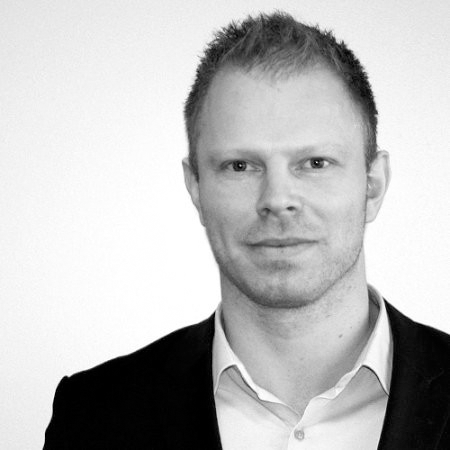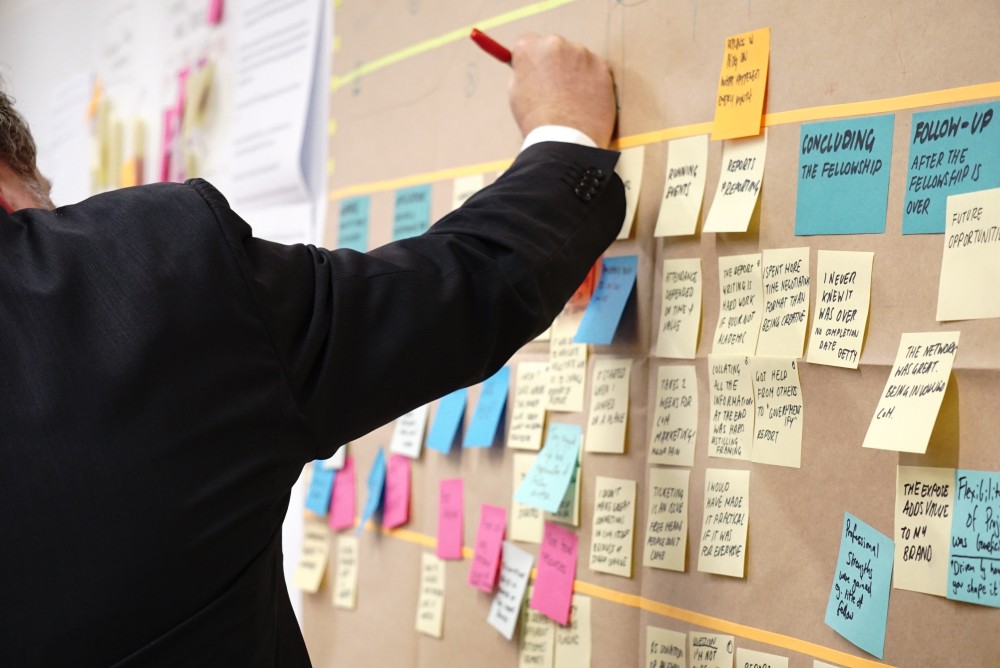When the COVID-19 struck, it threw companies into survival mode. No one had a manual on how to deal with the challenge of this magnitude. However, companies with great leaders and good and effective analytics teams have certainly done better at this uncertain time, as they would have insights into their company’s needs and strategies for the future, states Søren Kold, Head of People Analytics at Grundfos.
Søren Kold will be presenting on How COVID-19 framed the need for speed in People Analytics at the second edition of the Nordic People Analytics Summit 2020. We had the pleasure to catch up with him on the subject of his NPA Summit presentation, as well as his views on the state of HR and people analytics.
Hyperight: Hello Søren, nice to meet you. We are super excited to have you as a speaker at the online Nordic People and Analytics Summit 2020. To begin with, please share a bit more about yourself, your background and role at Grundfos.


Søren Kold: Thanks a lot for the invitation! I am always happy to share my thinking on People Analytics and to interact with like-minded people in this space.
My name is Søren Kold, and I am heading People Analytics in Grundfos. I joined the company two years ago in August 2018 to develop and drive the People Analytics function. My work in Grundfos has been providing guidance and recommendations with data-driven insights for managers at all levels to make better business decisions. That’s all from being responsible for people insights from engagement surveys and continuous listening to standalone projects, partnering up with business leaders and support functions to solve business problems, leveraging the data available to help bring recommendations on how to solve business issues with a people aspect.
I have a background in the consultancy world, where I worked for Ennova, a Nordic consultancy company in the space of employee engagement and customer experience, for 11 years. Most of them as Head of Analytics and in Business Development, being responsible for analytical solutions and heading People Analytics projects with clients. In this role, I had the opportunity to work with leading international companies on business problems using people data. In that sense, I had taken part in People Analytics even before it was called that.


Hyperight: Your session topic covers a really pressing and relevant issue – How COVID-19 framed the need for speed in People Analytics. How much were companies prepared for all the challenges that COVID-19 posed in terms of talent and workforce management?
Søren Kold: I think leaders around the world tried their best to protect their businesses and employees in these times, but I don’t think that no-one had a manual for what steps they specifically needed to take – how could they have, really?
My experience is that things went very fast as the pandemic spread across the globe. With the COVID-19, a lot changed more or less overnight. Companies sent employees home, they were forced to impose restrictions on how to work together physically, many markets froze, and along came uncertainty for both organizations and their employees. All of that called for an immediate need for more and better leadership because everything was new to everyone; new structures came in place, new ways of collaborating, new touchpoints for customers of the companies etc. But in years before, there’s been increasing debate on the ‘future of work’. This has included a debate on how technology would enable us to work in the future. With the pandemic, I think we took enormous steps in the direction of pulling the future to the present.
But, I think, companies with great leaders and good and effective analytics teams have done better in this time. I’d assume that they would have been more ready for the change to eventually come since they would probably already have more insight into their company’s needs, better aligned with their workforce, and many may already have had strategies in place for how to develop for the future. Companies that didn’t have that, or only parts of that, in place, were forced to ‘build the plane as they were flying’.
Hyperight: How can people analytics help businesses to manage the crises of the pandemic in their organisations?
Søren Kold: If People Analytics is done properly, it has the power to impact the business directly, since good people analytics focuses on the business. With people analytics, you get insights, and with insights, you can better prioritise, which is at the core of being in a crisis. So insights will help businesses to make better decisions, and in the current pandemic situation, change is happening fast to the way we work and how we do business. In situations like this, the need for insights to navigate a new landscape is needed.
I believe there are already many cases on how people analytics can help. I think that continuously listening to employees to adjust how you should lead and communicate in this special situation is a good idea. I think you can optimize business-critical operations if you know how people work together. That information is accessible through organizational network analysis. Different risk assessment analytics to gauge the potential impact on employees or your supply chain. If your company is forced to a changed strategy, strategic and operational workforce planning will help you to align talent with business needs etc. That could be some of the more obvious examples, but I believe the list is long.
Hyperight: A survey done two years ago found out that more than 70% of companies consider people analytics to be a high priority. However, less than 5% of big data investments go to HR. From your experience, do you think this ratio has changed in this two-year period? Are companies allocating bigger budgets to HR and people analytics initiatives?


Søren Kold: I am not surprised that it’s only a smaller percentage of big data investments that goes to HR, because the data still used in HR is not big data. But generally speaking, I think there’s an increasing interest and need for People Analytics. If you look at international studies, you will see that not only do more and more companies adopt this data-driven way of thinking, they’re also implementing People Analytics teams more today than 5 years ago. I know, that in companies where People Analytics has gotten the opportunity to mature, it has proved its value to the business, and when doing that, it tends to grow even more. I also believe that people analytics skills come out as some of the most sought after skills in HR in various research when looking into skills for the future.
But to answer the question directly: Yes, I believe that there will be invested more in analytics functions. Not only people analytics but also in more business-wide analytics functions. We have more and more data and get more and more channels to get it from, with different perspectives to cast a spotlight on business problems. Also, I think there will be an increasing understanding of how mission-critical a data-driven approach is. I don’t know many places where business-critical decisions are taken without data to inform those decisions.
Hyperight: And lastly, could you share with us some of the trends that we can expect with HR and people analytics in the next couple of years?
Søren Kold: The traditional take on HR has been a strong focus on the workforce itself. Recruiting, training, implementing policies on how to work, securing tools and processes to be productive, that helped the company stay competitive in a given market. My belief in HR and people analytics is that it needs to be in close connection with the business, so moving away from being only support, but to be part of the business. If that’s to succeed, I believe that HR will also have to take on a broader role, and think much more about work itself, than only the employees.
With the gig economy, we will probably in the future see more freelance workers, more contractors, and eventually a lot of automation, taking away some jobs, but also creating new ones. That calls for a broader perspective from HR, and it needs insights from analytics to help drive the business. So, employees will continue to be an important focal point, but will in the future not be the only one. I couldn’t see other functions in the organisations taking this responsibility, but someone needs to, and I hope HR will evolve in taking the leading role in a broader scope of ‘work being done’.
From the people analytics perspective, there will be a lot of work to be done to understand how we work together in networks, to help keep an engaged workforce through good experiences in the organisations, and of course through strategic workforce planning. That will help the organization stay as efficient as possible.














Add comment